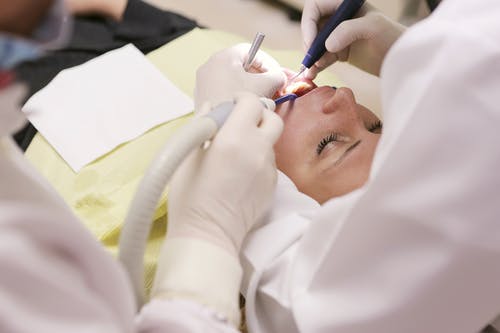Dental sedation is also known as sleep dentistry. People tend to choose sedation when they have anxiety about the pain or the dentist. There are different types of dental sedation methods. Not all such methods involve actual sleep, but some methods do. So here’s what you should know about dental sedation and the types of it to help you get an idea as to the options available to you.
What Is Dental Sedation?
Dental sedation has a variety of techniques to calm a patient before and during a dental procedure or to make them more comfortable during long procedures. Many people receive laughing gas before dental procedures when getting root canals or crowns. However, dental sedation covers a wider scope than just laughing gas. It has more options for patients who feel anxiety or fear of going to the dentist. This is not a part of the pain management provided to you by the dentist.

That part is covered by using numbing agents and shots. Getting a shot might be painful and frightening to you, so dental sedation can help you handle that. You may not even feel receiving the procedure with certain types of sedation. You can search for sleep dentistry melbourne to find out a good dental clinic nearby to get your required procedure done.
Laughing Gas
Laughing gas which is nitrous oxide is used to relax patients during dental procedures. You will be aware while you take nitrous oxide but it wears off fast once you stop breathing it in. patients who are sedated using laughing gas are usually allowed to drive themselves home after the procedure. The effects of this gas is very mild and you will start to feel the gas very quickly just in about thirty seconds after you start breathing it in. Just the laughing gas itself is enough for some patients while other patients need oral sedation on top of laughing gas.
Oral Sedation
This is also called conscious sedation in which you have to take a prescribed dose of sedative before the procedure. The time you take the pill will depend on your case. Sometimes you will be asked to take a pill before the night before the procedure and one an hour before the procedure or as directed by your dentist. Oral sedation leaves you awake during the procedure but relaxes you. This is beneficial for patients with higher anxiety levels.

IV Sedation
This type of sedative has a few forms. The first one is identified as “twilight” where you will be conscious but not very aware of your surrounds. This will make you feel sleepy and may not remember anything about the procedure once it is over. Another option is general anesthesia which is uncommon in sleep dentistry. Only the patients who need to undergo a significant surgery or resistant to other sedation types will need general anesthesia.
This is just an overview of the types of dental sedation. Make sure you discuss with your dentist to figure out whether you actually need sedation or not and if yes, what type would be the best for you.




